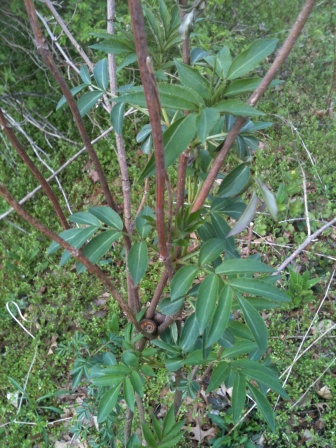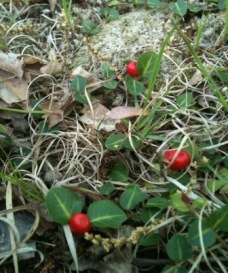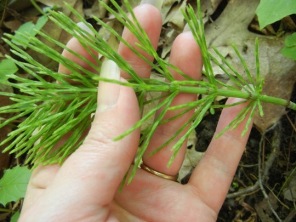| 
|
Elder (Sambucus canadensis)
Elder is a mysterious, medicinal, and magical tree said to be inhabited by a spirit, often called “Elda Mohr,” or “Frau Hollender,” who takes revenge on those who do not respect the elder. To cut or burn elder is thought to be such bad luck that a major road works in England was redesigned when the workers refused to destroy a lush stand of elder. Elder berries are anti-viral. The flowers counter fevers. We will make elder remedies later in the year. Elder does just as well in your garden or by the road as it does in the woods. |
| 
|
Partridge berry (Mitchella repens)
This creeping plant has a reputation as a medicine plant but is rarely used. I wrote a monograph on it in The United Plant Savers book Saving the Future. The red berries are perfectly safe to eat, though tasteless. Partridge berry is often confused with wintergreen, as they are both small plants with large red berries. The smell is the real identifying mark, which you have to experience in person. Protect this plant. |
|  |
Horsetail (Equisetum arvense)
Horsetail is one of the few non-flowering, non-mushroom plants commonly used by herbalists. My teachers were insistent that it be picked before the end of May, so get out and get it if you are planning to use it this year. Apparently, the silica content gets higher and higher as the plant grows, making the older plants problematic for the kidneys. A pinch of horsetail added to other infusions is said to make the minerals even more active and absorbable. |
